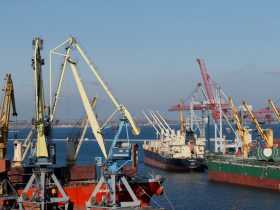
Argentina’s garment industrys
Argentina’s garment industry stands at a crossroads, grappling with economic challenges while exploring avenues for sustainable growth and technological advancement.
Economic Landscape and Employment
The textile and apparel sector contributes modestly to Argentina’s economy, accounting for approximately 1% of GDP and exports. Despite this, it remains a significant employment source, engaging over 300,000 workers, which constitutes more than 5% of the nation’s private sector workforce. However, the industry is marred by high informality; over 70% of apparel employment is informal, and a substantial portion operates in small-scale or home-based settings. Women and immigrants, particularly from Bolivia, Paraguay, and Peru, represent a large segment of this workforce, often facing precarious working conditions.
Market Dynamics and Consumer Trends
In 2025, Argentina’s apparel market is projected to generate approximately US$3.95 billion in revenue, with women’s apparel being the largest segment. However, the market is expected to experience a slight annual decline of 1.49% over the next four years. Notably, there’s a growing consumer shift towards sustainable and locally-made clothing, reflecting a broader global trend favoring ethical and eco-friendly fashion choices.
Policy Reforms and Industry Challenges
The administration of President Javier Milei has implemented significant economic reforms aimed at liberalizing trade and reducing protectionism. Measures include lowering tariffs on various imports and simplifying labeling requirements for imported textiles and garments. While these policies aim to enhance consumer access to affordable goods, they have sparked concerns within the domestic garment industry. Local manufacturers warn that increased competition from imports could jeopardize employment and the sector’s viability.
Technological Advancements and Sustainability Efforts
Amidst these challenges, segments of Argentina’s garment industry are embracing innovation and sustainability. Technological advancements, such as digital printing and Direct-to-Film (DTF) technology, are revolutionizing production processes, enabling more efficient and versatile manufacturing. Additionally, initiatives like Erica Vega’s IMIX project are promoting sustainable fashion through upcycling and circular economy principles, reflecting a growing commitment to environmental responsibility within the industry.
Conclusion
Argentina’s garment industry is navigating a complex landscape marked by economic reforms, market shifts, and evolving consumer preferences. While policy changes present both opportunities and challenges, the industry’s embrace of technological innovation and sustainability initiatives offers a pathway towards resilience and growth. Balancing these elements will be crucial for the sector’s future success.


Leave a Reply